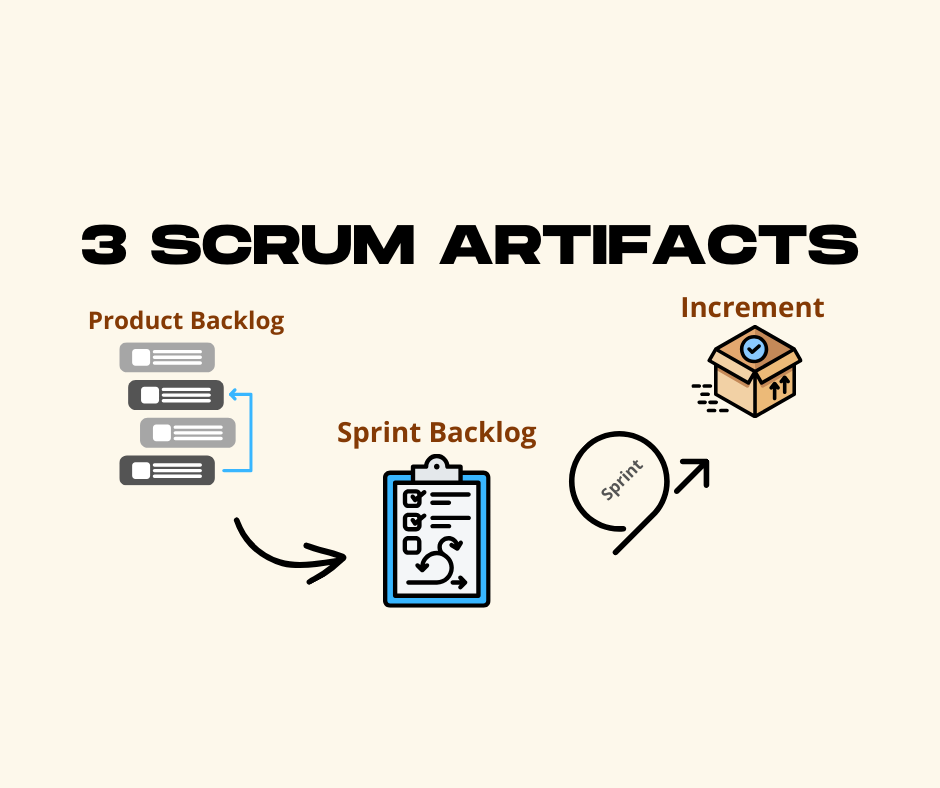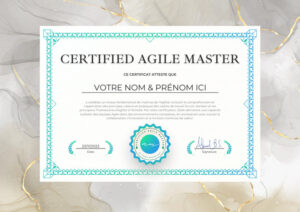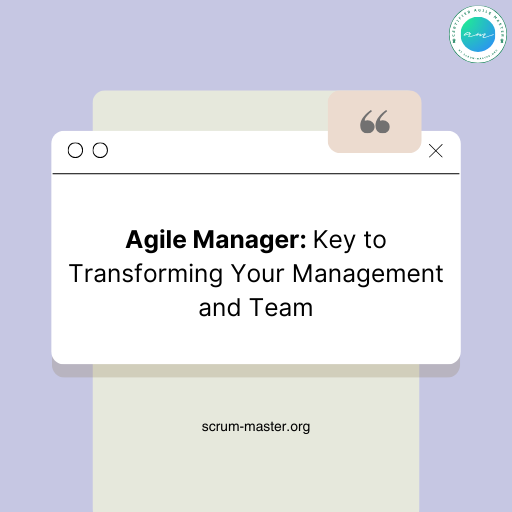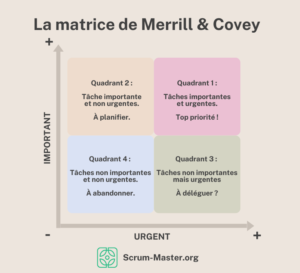The agile approach is widely used in project management. Among agile methods, Scrum and Kanban are the most widespread. They can be used to efficiently manage different types of projects, but which one should you choose? This article compares these two frameworks, detailing their advantages, disadvantages and application contexts.
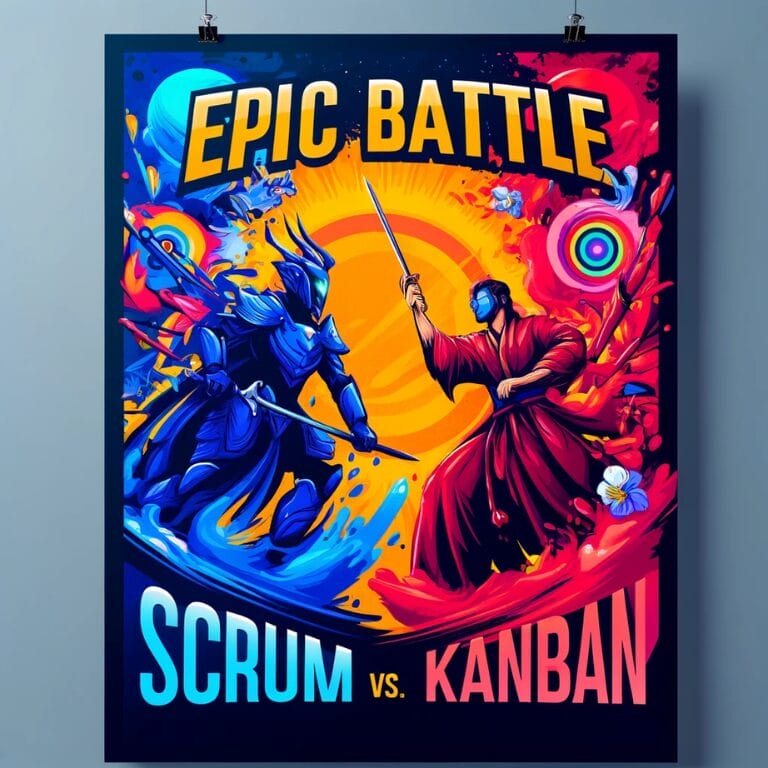
Index
What is an Agile Method?
Agile principles
Agile methodology is based on short development cycles, short-term objectives and close collaboration between stakeholders. It enables rapid adaptation to change and continuous improvement. This approach is often used for complex and dynamic projects, where requirements may change along the way. Agile teams work iteratively, delivering product increments regularly to obtain constant feedback and adjust development accordingly.
Introducing Scrum
Origin and history
Scrum was developed by Jeff Sutherland and Ken Schwaber in the 1990s as an agile software development method. It draws on industrial production techniques and process control theories to improve work efficiency and quality.
Scrum Basics
Scrum is based on iterative cycles called Sprints, which generally last from two to four weeks. Each Sprint begins with a Sprint Planning, where the objectives are defined. Teams meet daily for short meetings (Daily Scrum) to synchronize activities. At the end of the Sprint, a Sprint Review is organized to evaluate the work accomplished, followed by a Sprint Retrospective to identify possible improvements.
Roles and responsibilities
- Scrum Master: The Scrum Master facilitates Scrum processes and removes obstacles that could slow down the team. He ensures that Scrum practices are respected and mediates between team members.
- Product Owner: The Product Owner is responsible for defining and prioritizing product functionalities. He manages the Product Backlog and ensures that the development team is working on the most important tasks.
- Development team: Made up of professionals with a variety of skills, the development team works on completing the Sprint tasks. It is self-organized and works closely together to achieve the Sprint objectives.
Scrum Events
- Sprint Planning: This meeting marks the start of each Sprint. The team plans the work to be done according to the priorities defined by the Product Owner.
- Daily Scrum: A daily 15-minute meeting where team members synchronize their activities and discuss any obstacles.
- Sprint Review: At the end of each Sprint, the team presents the work accomplished to the Product Owner and other stakeholders for feedback.
- Sprint Retrospective: This meeting is held after the Sprint Review and aims to identify what went well, what needs to be improved, and how the team can improve for the next Sprint.

Introducing Kanban
Origin and history
Kanban has its origins in Lean and the Toyota production system of the 1940s, developed by Taiichi Ohno to improve production efficiency and quality. In Japanese, “Kanban” means “label” or “sign”, reflecting the visual nature of this method.
Kanban Basics
Kanban aims to improve existing processes gradually, without major upheaval. Unlike Scrum, it does not impose specific roles or iterative cycles. It focuses on workflow visualization and continuous optimization.
Kanban Fundamentals
- Visualize workflow: Kanban uses a Kanban board to visually represent tasks and their progress. This helps teams identify bottlenecks and manage priorities effectively.
- Limit Work In Progress (WIP ): By limiting the number of tasks in progress at any one time, Kanban reduces work overload and improves quality. This allows teams to focus on completing tasks before starting new ones.
- Managing workflow: The aim is to continuously improve workflow by monitoring and adjusting processes. Teams regularly analyze performance data to identify areas for improvement.
- Make processes explicit: Documenting and clarifying work processes helps to ensure common understanding and facilitate improvements. Rules and procedures must be well defined and visible to all team members.
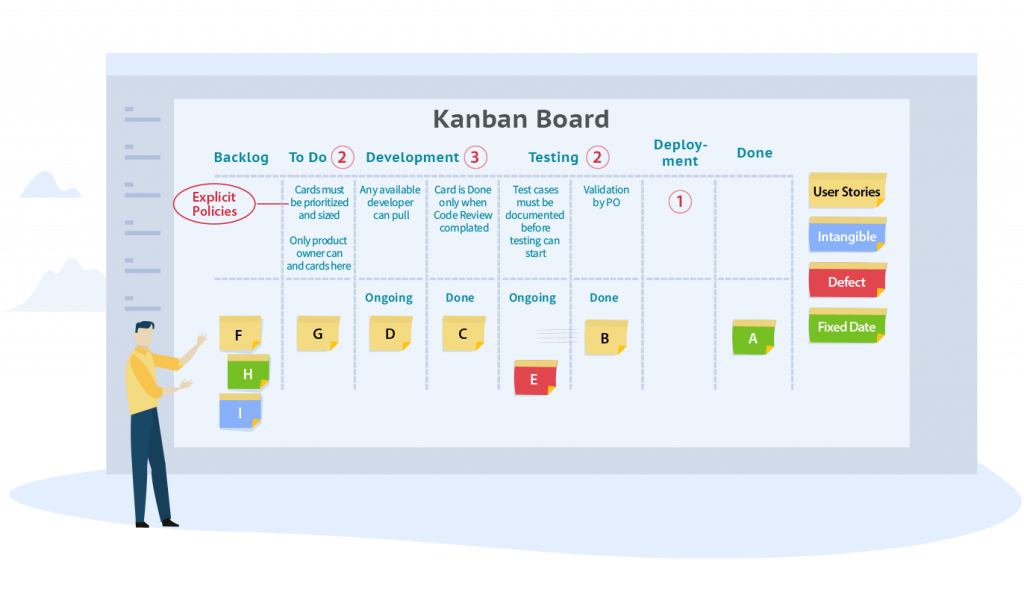
Scrum vs Kanban: Advantages and Disadvantages
Advantages of Scrum
- Clear, defined structure: The Scrum method offers a well-defined structure with specific roles, events and artifacts, making the methodology easy to understand and adopt.
- Well-defined roles and responsibilities: The roles of Scrum Master, Product Owner and Development Team are clearly defined, helping to avoid ambiguity and ensure effective collaboration.
- Regular, predictable work cycles: Sprints offer short, repetitive work cycles, enabling teams to plan and deliver product increments on a regular basis.
- Facilitate continuous improvement through retrospectives: Sprint retrospectives enable teams to regularly reflect on their processes and continuously improve them.
Advantages of Kanban
- Flexibility and adaptability: Kanban is highly flexible and can be applied to a variety of contexts without requiring drastic changes. It enables teams to adapt quickly to changing requirements and priorities.
- Incremental and evolutionary approach: Kanban enables incremental improvements without disrupting existing processes, thus reducing resistance to change.
- Less resistance to initial change: Since there are no strict roles or iterative cycles, Kanban can be easier to adopt for teams and organizations reluctant to change.
- Transparency and process visualization: The Kanban board provides a clear overview of work in progress, helping teams to identify obstacles and improve efficiency.
Disadvantages of Scrum
- Rigidity for certain contexts: Scrum’s strict structure can be restrictive for projects or environments requiring greater flexibility. Defined roles and Sprint cycles may not suit all teams.
- Requires significant commitment and initial training: Implementing Scrum requires in-depth team training and an ongoing commitment to Scrum practices and principles.
- Can be difficult to adapt for highly changing projects: Projects where requirements change frequently can pose challenges, as Scrum aims to minimize changes during a Sprint.
Disadvantages of Kanban
- Lack of formal structure can lead to drift: The absence of defined roles and strict work cycles can lead to inefficiencies if the team is not disciplined.
- Less framing of roles and responsibilities: Kanban doesn’t specify roles, which can create ambiguity about responsibilities within the team.
- Requires rigorous discipline to be effective: Kanban’s success relies on teams being rigorous in limiting work-in-progress and following defined processes. Without discipline, the system can become chaotic.
Scrum and Kanban application contexts
When to choose Scrum?
- Projects with well-defined requirements: Scrum is ideal for projects where requirements are relatively stable and can be planned in advance.
- Teams that benefit from a rigid structure: Teams that need a clear structure and defined framework often find Scrum very beneficial.
- Need for regular delivery cycles: Scrum is well suited to projects requiring frequent and regular delivery of functional products.
When to choose Kanban?
- Projects with continuous workflows: Kanban is particularly suited to environments where work is continuous and tasks arrive unpredictably.
- Environments requiring great flexibility: Kanban enables teams to adapt quickly to changes and new priorities.
- Teams already in place with processes to be improved incrementally: Teams that already have established processes and are looking to improve them incrementally benefit greatly from the Kanban approach.

Improving project management by integrating Kanban into Scrum
Adopting Kanban techniques within the Scrum framework can help identify and resolve bottlenecks, improving overall project management efficiency. Here are some practical adjustments to achieve this integration:
Identifying and managing bottlenecks
Use an enriched Kanban board to more easily spot where tasks are accumulating, indicating a possible bottleneck. By adding specific milestones such as “Awaiting validation” or “Awaiting customer return”, you can not only clearly see where delays are occurring, but also take proactive steps to resolve them.
Adaptation of current working limits
Set appropriate work-in-progress (WIP) limits at each stage of the process to avoid excessive task backlogs and encourage a continuous workflow. If a specific step, such as testing or code reviews, becomes a recurring bottleneck, adjust the WIP limits for that step to ensure faster task processing.
Regular process reviews
Incorporate regular workflow reviews to examine and adjust process steps based on observed results. Use periodic meetings to discuss identified bottlenecks and strategies for resolving them, based on collected data such as time spent on each step.
Process clarification and documentation
Make sure every step of the process is well documented and understood by all team members. Clear definitions and guidelines for each step will help prevent confusion and delays, facilitating rapid resolution of problems as they arise.
By integrating elements of Kanban into Scrum, you can not only make the development process more transparent, but also more responsive to operational issues, enabling continuous improvement in project management. These adjustments encourage a culture of proactive bottleneck resolution, essential for dynamic, fast-moving projects.
Conclusion
Scrum and Kanban are two powerful agile methods for project management. The choice between the two depends on your specific needs, the nature of your project and the structure of your team. Understanding their advantages and disadvantages will help you make the best choice to achieve your goals.
FAQ about Scrum and Kanban
Choosing the right agile method depends on the specific needs of your project. Kanban and Scrum are two of the most popular methods. Scrum is ideal for projects requiring regular delivery cycles and a strict structure. The Kanban method is best suited to environments requiring a high degree of flexibility and continuous workflows. To determine which method to choose, assess the nature of your projects and your team’s preferences.
A Scrum team is made up of members with well-defined roles, such as the Scrum Master, Product Owner and developers. Scrum teams work in cycles called Sprints, generally lasting two to four weeks. Each Sprint includes Scrum meetings such as Sprint Planning, Daily Scrum, Sprint Review and Sprint Retrospective. These meetings structure the work and encourage continuous improvement.
The Kanban method focuses on visualizing work using a Kanban board, limiting work-in-progress (WIP), and continuous improvement. Unlike Scrum, Kanban has no specific roles or strict work cycles. Kanban vs Scrum: Kanban allows greater flexibility and is particularly useful for teams with continuous workflows, while Scrum offers a more rigid structure with defined roles and sprints.
A Scrum board is a visual tool used to track tasks during a Sprint. It helps Scrum teams visualize work in progress, identify obstacles and manage priorities. This improves transparency and efficiency, allowing the team to focus on the most important tasks.
An agile coach helps teams to adopt and optimize agile practices, whether Scrum or Kanban. The coach provides advice on improving processes, helps resolve conflicts and maximizes productivity. For a Scrum team, the coach often helps the Scrum Master to perfect Scrum practices. For a team using the Kanban system, the coach can help optimize the Kanban board and manage work-in-progress (WIP) limits.
The Waterfall method is a traditional approach to project management, where each phase must be completed before moving on to the next, creating a rigid, sequential workflow. Unlike Scrum and Kanban, a Waterfall project doesn’t make it easy to go back or adjust priorities once a phase has been completed. Scrum and Kanban offer greater flexibility, allowing adjustments to be made during the course of a project, which is crucial in environments where requirements can change frequently.
The Waterfall method has several disadvantages compared with Scrum and Kanban. It’s less flexible and doesn’t allow you to make adjustments along the way, which can be problematic in projects where requirements change. What’s more, Waterfall doesn’t encourage continuous improvement or close collaboration between teams, key elements of agile methods such as Scrum and Kanban. This rigidity can lead to delays and cost overruns if changes are required after the project has started.
Additional sources
To deepen your knowledge of agile methodologies, here is a selection of resources that might interest you:
- Kanban: 6 basic practices – Explore the fundamentals of Kanban in our detailed article.
- The Official Scrum Guide – Consult the official guide for a complete understanding of Scrum principles.
- Applying Scrum with Kanban: A Pointless Book! (English Edition) – Kindle format – A provocative book that explores the integration of Scrum with Kanban.
- Scrum’s 3 pillars and 5 values – Discover the essential foundations of Scrum and their impact on agile project management.

